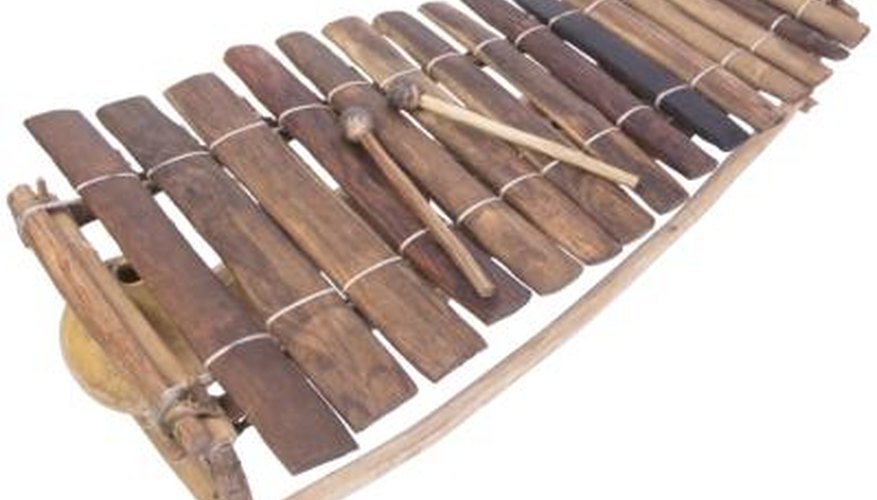The xylophone is an ancient music instrument. The name comes from the Greek words for "Wood" and "Voice" and have been used to make music in quite a few cultures around the world.
While a xylophone made from copper is actually a metallophone, rather than a xylophone, it is still a fun and educational project. The most difficult part is determining the length of the pipes.
Use the ruler to mark the pipe at .366 meters. Cut the pipe at this mark.
- The xylophone is an ancient music instrument.
- Use the ruler to mark the pipe at .366 meters.
The formula for pipe length, in meters, is the square root of the quantity 70 divided by the frequency in Hertz. A .366 meter pipe will vibrate at 523.35Hz, which is a C on the musical scale.
Cut the D note pipe to .345 meters.
Test the two pipes by tapping them and listening to the vibrations. Fine-tune the notes by trimming a bit more off of the pipe.
Mark the E note pipe at .326 meters, and cut it.
Test this pipe against the other two, and trim as necessary. If you trim too much off, set this pipe aside for the next shorter length, and start over with a fresh piece of pipe.
Cut the F note pipe to a length of .317 meters, and cut the G pipe to .299 meters.
- Cut the D note pipe to .345 meters.
- Cut the F note pipe to a length of .317 meters, and cut the G pipe to .299 meters.
Continue to test the new pipes as they're added to the collection, and trim or cut fresh pipes as necessary.
Cut the last three pipes to .282 meters, .266 meters and .259 meters to produce the A, B and C pipes.
Choose how you will mount the pipes. One of the easiest methods is to run string through the centre of each piece of pipe, and fasten the string to hooks or nails on a wooden frame.
TIP
Remember that it's easy to trim the pipes to tune them to a specific note, but that it's impossible to add pipe after it's been cut.
WARNING
Use care when handling the hacksaw or pipe cutting tool.
